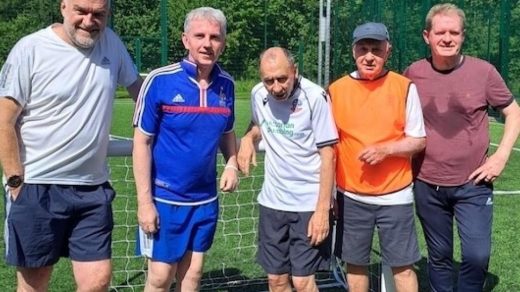
Neuroscientists from the Faculty of Medicine of the Catholic University, Rome Campus, and the A. Gemelli IRCCS Polyclinic Foundation found that intensive exercise could slow the course of Parkinson’s disease and described the biological mechanisms. The finding could pave the way for new non-drug approaches.
The study “Intensive exercise ameliorates motor and cognitive symptoms in experimental Parkinson’s disease by restoring striatal synaptic plasticity” is published in the journal Science Advances. The research was led by Catholic University, Rome Campus and A. Gemelli IRCCS Polyclinic Foundation, in collaboration with several research institutes: the San Raffaele Telematic University Rome, CNR, TIGEM, University of Milan, and IRCCS San Raffaele, Rome.
The research was funded by the Fresco Parkinson Institute to New York University School of Medicine and The Marlene and Paolo Fresco Institute for Parkinson’s and Movement Disorders, the Ministry of Health and MIUR (both related to the PRIN 2017 call and CNR-MUR calls, two different grants). It identified a new mechanism responsible for the positive effects of exercise on brain plasticity.
The corresponding author, Full Professor of Neurology at the Catholic University and director of the UOC Neurology at the University Polyclinic A. Gemelli IRCCS Paolo Calabresi, said: “We have discovered a never observed mechanism, through which exercise performed in the early stages of the disease induces beneficial effects on movement control that may last over time even after training is suspended”.
“In the future, it would be possible to identify new therapeutic targets and functional markers to be considered for developing non-drug treatments to be adopted in combination with current drug therapies”, he added.
BACKGROUND
Previous work has shown that intensive physical activity is associated with increased production of a critical growth factor, the brain-derived neurotrophic factor (BDNF).
The authors were able to reproduce this phenomenon in response to a four-week treadmill training protocol in an animal model of early-stage Parkinson’s disease, and to demonstrate, for the first time, how this neurotrophic factor determines the beneficial effects of physical activity in the brain.
THE STUDY.
The study, whose leading authors are Drs. Gioia Marino and Federica Campanelli, researchers at the Faculty of Medicine, Catholic University, Rome, provides experimental support to the neuroprotective effect of exercise by using a multidisciplinary approach employing different techniques to measure the improvements in neuronal survival, brain plasticity, motor control and visuospatial cognition.
The main effect observed in response to daily sessions of treadmill training is a reduction in the spread of pathological alpha-synuclein aggregates, which in Parkinson’s disease leads to the gradual and progressive dysfunction of neurons in specific brain areas (the substantia nigra pars compacta and the striatum – constituting the so-called nigrostriatal pathway), essential to motor control.
The neuroprotective effect of physical activity is associated with the survival of neurons releasing the neurotransmitter dopamine and with the consequent striatal neurons’ ability to express a form of dopamine-dependent plasticity, aspects otherwise impaired by the disease.
As a result, motor control and visuospatial learning, which depend on nigrostriatal activity, are conserved in animals that practice intensive training.
Neuroscientists have also found that BDNF, whose levels increase with exercise, interacts with the NMDA receptor for glutamate, enabling neurons in the striatum to respond efficiently to stimuli, with effects that persist beyond the exercise practice.
Professor Paolo Calabresi said: “Our research team is involved in a clinical trial to test whether intensive exercise can identify new markers to monitor the disease progression slowing in early-stage patients and the profile of the progression of the disease. As Parkinson’s disease is characterized by important neuroinflammatory and neuroimmune components, which play a key role in the early stages of the disease, the research will keep on investigating the involvement of glial cells, highly specialized groups of cells that provide physical and chemical support to neurons and their environment. This will allow us to identify molecular and cellular mechanisms underlying the observed beneficial effects”, he concluded.
Get the source article here


